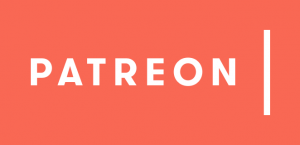Vector-Like Quarks
Postcards from the Energy Frontier by Prof Jon ButterworthMy colleagues and I had a new paper on the arXiv yesterday on New sensitivity of current LHC measurements to vector-like quarks.

Vector-like quarks are hypothetical particles that appear in some extensions of the Standard Model. Such extensions are continually being proposed to try to improve the Standard Model, to allow it to describe nature in a more complete or theoretically-pleasing way.
As I’ve mentioned several times before, data from the Large Hadron Collider have excluded a lot of these extensions, in particular many versions of the most theoretically favoured one, Supersymmetry. This has led to a welcome diversification in ideas and hence models. Vector-like quarks appear in some of these.
The “vector-like” part of their name means that they are not “chiral”. That is, the left-handed and right-handed versions of the them interact equally with the weak interaction, unlike the real quarks of the Standard Model, where only the left-handed ones do so. This modification means that vector-like quarks don’t have to get their mass from interactions with the Brout-Englert-Higgs field, and hence are not excluded by LHC measurements involving the Higgs boson. (Just having an extra generation of normal quarks is no longer allowed, for that reason.)
The proliferation of new ideas and models can be a bit daunting from an experimental point of view. Do we really have to go on a separate search mission for each, knowing that most, if not all, of these missions will actually be “search and destroy”? According to our paper, the answer is no, we don’t.
In practice, many different extensions to the Standard Model lead to similar-looking collision events. In fact, many of these events actually look rather like Standard Model processes, on an event-by-event basis. Statistically, however, the new model would change populations, so that a measured distribution would no longer agree with the Standard Model if the new extension were actually present.
In our paper, we use this fact and the library of existing measurements (mainly from ATLAS and CMS) to constrain the possibilities for the existence of vector-like-quarks. We find that quite a lot of so-far-unexplored parameter space is in fact already excluded by these measurements.
This is great from an experimental point of view. Rather than embarking on new searches for every theorist’s brain-wave, we can concentrate on measuring what actually happens in our experiment as completely and precisely as possible — knowing that this will in fact give information on many of those brain-waves anyway. And the theorists can get more rapid feedback on their ideas and therefore focus on those that still have a chance of being realised in nature. And there is still room for dedicated search missions for especially exotic events that look nothing like the Standard Model.
The software projects we use to do all this are open source, and have been used to look at other new physics extensions too. You can find more results, and the code, via this link.
A win-win-win we hope. Except that there is still no sign of a vector-like quark.
 Professor Jon Butterworth is a physics professor at University College London and a researcher on the ATLAS experiment at CERN involved with, amongst other things, the discovery of the Higgs Boson. He is the author of two popular science books Smashing Physics and A Map of the Invisible. Postcards From the Energy Frontier is the successor to Jon’s hugely successful blog for The Guardian, Life and Physics. He is @jonmbutterworth on Twitter.
Professor Jon Butterworth is a physics professor at University College London and a researcher on the ATLAS experiment at CERN involved with, amongst other things, the discovery of the Higgs Boson. He is the author of two popular science books Smashing Physics and A Map of the Invisible. Postcards From the Energy Frontier is the successor to Jon’s hugely successful blog for The Guardian, Life and Physics. He is @jonmbutterworth on Twitter.
If you would like to reuse this content please contact us for details
Subscribe to The Cosmic Shambles Network Mailing list here.
The Cosmic Shambles Network relies on your support on pledges via Patreon so we can continue to provide great, new, exciting content without the need for third party ads or paywalls.
For as little as $1 a month you can support what we do and get some great rewards for doing so as well. Click the Patreon logo to pledge or find out more.


